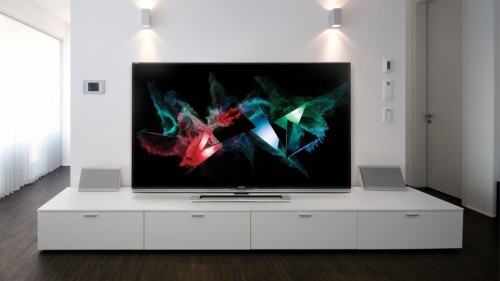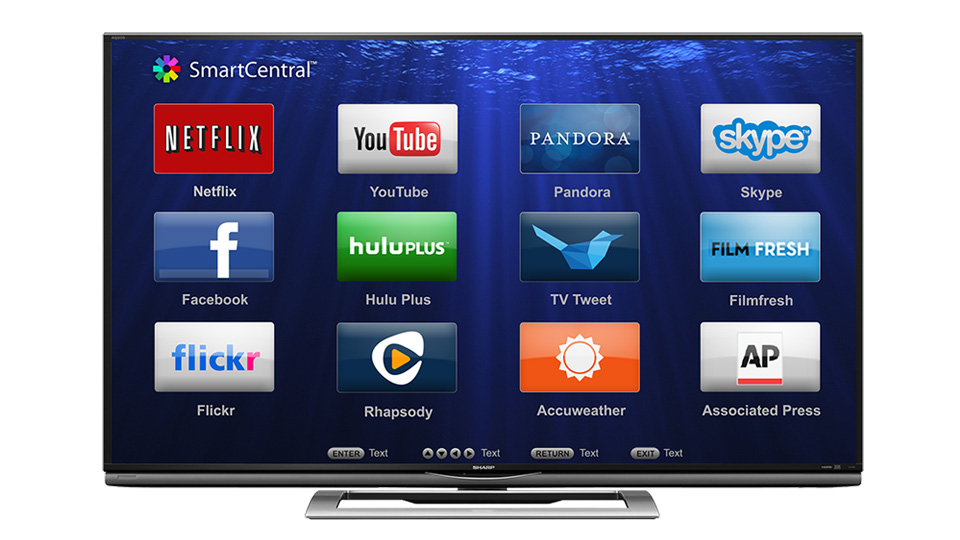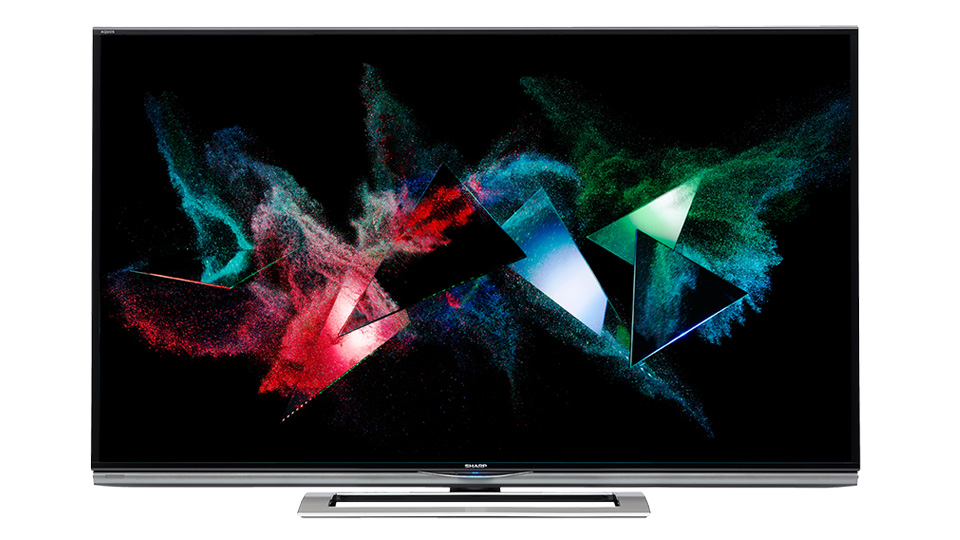Television makers are reaching a bottleneck in the consumer world; as technology continues to move at a faster pace next to user expectations, advancements are beginning to come at a cost with novelty returns. They’ve been promoted with attractive terms like 3D, smart, HD and thinner to validate steeper price tags, but they’ve yet to translate into increased consumer demand within the television market. At an event hosted by Sharp, where similar idioms were echoed by representatives in tailored suits, a relatively familiar, yet fresh term was being pushed as being the next big thing for the living room: 4K.
“In its basic sense, 4K has four times the amount of dots on the screen to make up the image than a full HD TV,” says Brian Gallagher, training manager for Sharp’s solutions division. “Basically your dots are four times smaller, being four times smaller allows you to have more sharpness and detail.”
The TIFF Bell Lightbox venue, which was largely devoid of furniture, demonstrated this fact as well as any low-key room would. Its series of paper-thin flat panels stood propped up much like an art gallery, bringing a vibrant richness to dull surroundings. Even with short glances, it was impossible to ignore the pixel-to-pixel crispness of each Sharp AQUOS. Colours popped in ways that made a room devoid of colour look all the more bland in comparison. Details such as wrinkles and strands of hairs were made more visible and crisp while each screen’s image clarity remained all the more sharp with a closer distance.
It is easy to get sucked into the jaw dropping greatness that is 4K, but a reality sets in when you factor in the technology’s young age. It’s still a relatively new feature and without the right content that caters to the resolutions promised by 4K, it becomes a bust.
Sharp’s solution to this problem has been its coined Quattron technology that adds a new colour to the typical red, blue and green colour spectrum typically associated with television sets.
“It means that we can actually use more colour in the picture, but it also means that there is an extra sub pixel to use for resolution,” says Abraham Cherian, Associate Vice President at Sharp Electronics Canada. “That’s what we are using in our Quattron+ TVs. We’re using the extra sub-pixel to actually produce more resolution which gives you close to 4K resolution.”
When translated in basic terms, this means that content not originally made for a 4K standard of quality such as a blu-ray film can be made to look very similar to the crispness offered by 4K thanks to this one extra colour.
In addition to new visual features, such as the inclusion of SmartCentral 3.0, Sharp is just another company in a lineup of television manufacturers that continually want “smart” functionalities to work alongside the living room TV. Streaming services such as Netflix, Hulu Plus and YouTube, among others, all have a common place within the interface, in addition to apps. Browsing the web while watching a program, or controlling your television through your phone or tablet via Sharp’s mobile app, are all meant to make the TV set an attractive central hub. The problem, however, comes from how slow and bland everything looks. Browsing appeared sluggish, while the interface itself lacked the same sort of punch one would expect in the days of Android and OSX mobile interfaces. It largely seemed like an afterthought and served as a reminder that Sharp is a hardware manufacturer first and foremost.
Despite those flaws, the almost jaw-dropping beauty provided by Sharp’s new lineup isn’t something any individual can overlook.
“I got these TVs at home, I have no choice,” says Gallagher, with a wide smile followed by a laugh. “They send them to me and say, run them through their paces. I’ve never seen anything like it, once you watch a Quattron+, it would be hard for me to go back, I can’t go back to RBG, I can’t.”
Words By. Noel Ransome






Comments are closed.